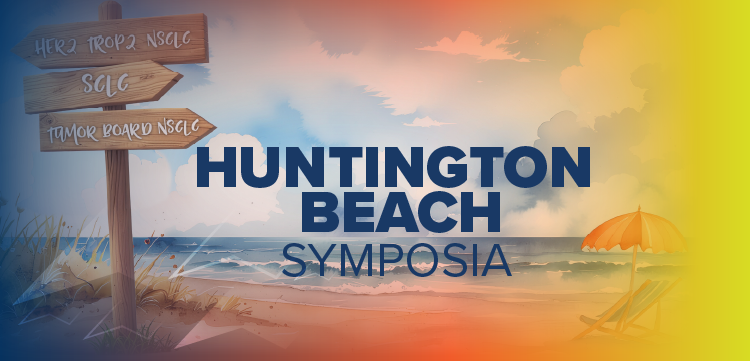- MHE July 2025
- Volume 35
- Issue 7
Rare Diseases: Once Lightning Strikes, Now Lightning Storms
For payers, claims for rare disease treatments used to be uncommon. Not anymore, thanks to an increasing number of new, high-priced drugs for rare diseases.
Clinical efficacy, net price and safety continue to be top factors payers consider when making formulary decisions for treatments for rare diseases. Financial factors, however, are playing an increasingly larger role in payer decision-making. “We’ve seen this uptick of financial pressure when it comes to decision-making for access decisions,” says Stephen Meninger, Pharm.D., medical outcomes science liaison at Alnylam Pharmaceuticals Inc., a pharmaceutical company that markets several products for rare diseases, including Onpattro (patisiran), Amvuttra (vutrisiran), Givlaari (givosiran) and Oxlumo (lumasiran). Alnylam’s products are small interfering RNA medications that work by degrading RNA to prevent the transcription of disease-causing DNA.
Increasing economic pressures have led many stakeholders to expand their use of cost-control measures, such as stricter prior authorization, specialty pharmacy and site-of-care mandates, and risk-sharing agreements, according to the most recent “Rare Disease Trend Report” by Alnylam, a survey of payers and employers on the management of rare disease products. The respondents, who included 30 U.S.-based medical and pharmacy directors and employers, completed the survey from Oct. 14, 2024, to Oct. 24, 2024. Alnylam added employer groups to the survey this year.
“In years past, employer groups have thought of rare diseases as lightning strikes. Now, they’re thinking about them more as lightning storms,” says Meninger, who discussed findings from the survey at Asembia’s specialty pharmacy meeting in Las Vegas in April 2025.
Costs for new treatments continue to rise. Approximately 7,000 rare diseases have been identified and, by some accounts, between 25 million and 30 million people in the U.S. are affected by them. Individually, rare diseases may be unusual but as a group, they are far less so. Meanwhile, an increasing number of them have treatments that often have a very high price. The median annual treatment cost of new drugs that launched in 2024 was more than $350,000, with treatments for cancer and rare diseases priced at more than $400,000 per patient, according to the “Understanding the Use of Medicines in the U.S. 2025” report from the IQVIA Institute for Human Data Science.
Drug development in oncology alone is projected to add 100 new treatments over five years, contributing to an increase in spending from $224 billion to more than $440 billion in 2028, according to IQVIA. Treatments for rare diseases accounted for 45% of new trial startups in 2024, according to another IQVIA report that was published earlier this year. Of those, 69% were for therapies for rare cancers. New trials in metabolic/endocrinology and infectious diseases remained essentially flat compared with 2023.
Respondents to the Alnylam survey indicated that value- and outcomes-based contracts are among the innovative ways to manage the ballooning cost of drugs for rare diseases.
But outcomes-based agreements are difficult to execute, said Jeffrey Dunn, president of the Cooperative Benefits Group and another panelist at the Asembia session.
It’s challenging to measure outcomes in these contracts unless they’re claim-based, Dunn said. “If you offset the use of another expensive therapy, then there is value there. And if I pay for gene therapy and still have to pay for the older, expensive drug that it’s supposed to replace, then there should be some value in return. This is claims-based, and I can measure this.”
Dunn said Cooperative Benefits Group has several outcomes-based contracts with manufacturers for his clients. “But very little money goes back to clients. We’re not getting money back from the pharmaceutical companies because there’s no way to get the data to actually follow through on them.”
Drugs to treat patients with depression, Dunn said, are an example of the difficulty in assessing outcomes. “What data do you need to pull to show somebody is not doing better? If this is tied to utilization, we can do this. But many of the outcomes-based contracts are just impossible to measure and collect data on.”
The same is true for outcomes agreements for oncology therapies, he said. “How do you prove that the cause of somebody progressing in cancer was due to the lack of efficacy of the drug? It could be due to other things — side effects, compliance, adherence,” he said.
Value-based agreements, on the other hand, Dunn said, are more likely to rely on claim data to assess outcomes relative to costs. For example, value-based agreements are often used to hedge risk for gene therapies, where payers can measure whether a gene therapy has resulted in the lowered use of another high-cost therapy.
Articles in this issue
6 months ago
An AI Fix? That May Mean Major Data Remodeling6 months ago
The Direct-To-Consumer Drug Gambit and DebateNewsletter
Get the latest industry news, event updates, and more from Managed healthcare Executive.


















































